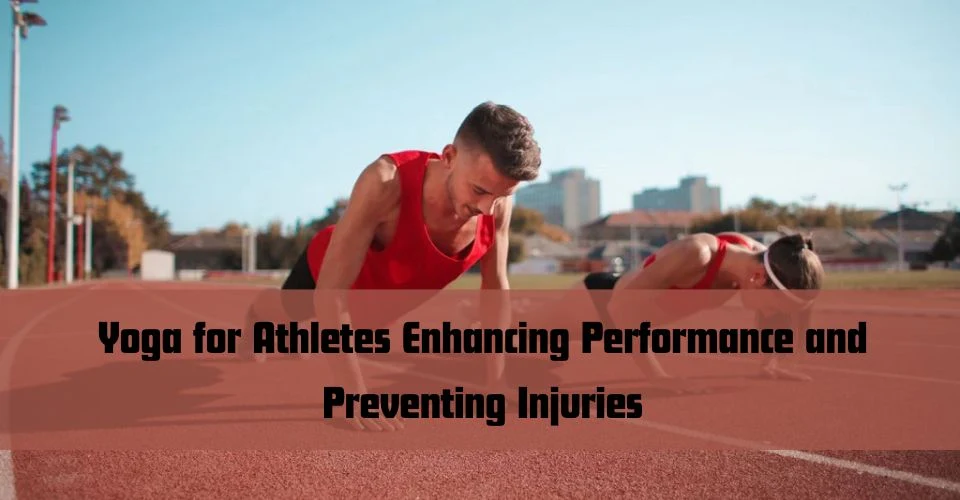नीचे कुछ योग आसन और अनुक्रम दिए गए हैं जो एथलीटों के लिए विशेष रूप से फायदेमंद हैं:
1. सूर्य नमस्कार
आसनों का यह गतिशील अनुक्रम शरीर को गर्म करता है और लचीलापन, शक्ति और हृदय संबंधी सहनशक्ति को बढ़ाता है। एथलीटों के लिए अपने प्री-वर्कआउट वार्म-अप या पोस्ट-वर्कआउट कूल-डाउन रूटीन के हिस्से के रूप में इसे करना बहुत अच्छा है।
2. रनर स्ट्रेच (रिवॉल्व्ड लंज)
यह स्ट्रेच कूल्हों, हैमस्ट्रिंग और पिंडलियों को लक्षित करता है, जो सभी दौड़ने या निचले शरीर के गहन वर्कआउट से तंग हो सकते हैं।
कैसे अभ्यास करें: एक पैर को आगे की ओर रखें, पीछे के पैर को फैलाए रखें। धड़ को बगल की ओर घुमाएँ, एक हाथ को आसमान की ओर और दूसरे को ज़मीन की ओर लाएँ, और 5-10 साँसों तक रुकें।
3. योद्धा आसन (वीरभद्रासन I, II, III)
ये आसन पैरों और कोर में ताकत बढ़ाते हैं, संतुलन में सुधार करते हैं और स्थिरता को बढ़ावा देते हैं। ये कूल्हों और छाती को खोलने में भी मदद करते हैं।
कैसे करें अभ्यास: खड़े होकर शुरू करें, एक पैर पीछे रखें और पीछे के पैर को सीधा रखते हुए सामने वाले घुटने को मोड़ें। बाहों को फैलाएँ और कई साँसों तक पकड़ें। दूसरी तरफ़ भी दोहराएँ।
4. कबूतर मुद्रा (एका पाद राजकपोतासन)
कबूतर मुद्रा कूल्हों को खोलने और ग्लूट्स और पीठ के निचले हिस्से में तनाव को दूर करने का एक शानदार तरीका है, जो एथलीटों, विशेष रूप से धावकों और साइकिल चालकों के लिए जकड़न के सामान्य क्षेत्र हैं।
5. बाल मुद्रा (बालासन)
एक पुनर्स्थापनात्मक मुद्रा जो तंत्रिका तंत्र को शांत करते हुए पीठ और कूल्हों को फैलाने में मदद करती है। यह गहन कसरत के बाद ठंडा होने के लिए एकदम सही है।
6. लेग्स-अप-द-वॉल पोज़ (विपरीत करणी)
यह मुद्रा रक्त संचार को बेहतर बनाने, पैरों की थकान को कम करने और आराम को बढ़ावा देने में मदद करती है। यह लंबी दौड़ या गहन कसरत के बाद रिकवरी के लिए बहुत बढ़िया है।
निष्कर्ष
योग उन एथलीटों के लिए एक बेहतरीन अभ्यास है जो अपने प्रदर्शन को बेहतर बनाना चाहते हैं, चोटों को रोकना चाहते हैं और तेज़ी से ठीक होना चाहते हैं। योग को अपने प्रशिक्षण दिनचर्या में शामिल करके, एथलीट लचीलापन, संतुलन, कोर ताकत, मानसिक ध्यान और समग्र गतिशीलता में सुधार कर सकते हैं। योग का ध्यान सांस, संरेखण और सचेत गति पर है, जो एथलीटों को चोट से मुक्त रहने, उनकी गति दक्षता में सुधार करने और शीर्ष शारीरिक और मानसिक प्रदर्शन को बनाए रखने में मदद करता है।
चाहे आप एक पेशेवर एथलीट हों या कोई ऐसा व्यक्ति जो नियमित शारीरिक गतिविधि का आनंद लेता हो, योग एक पूरक अभ्यास प्रदान करता है जो शरीर और मन को पोषित करता है, दीर्घकालिक स्वास्थ्य और प्रदर्शन सुनिश्चित करता है



.jpg)






0 Comments